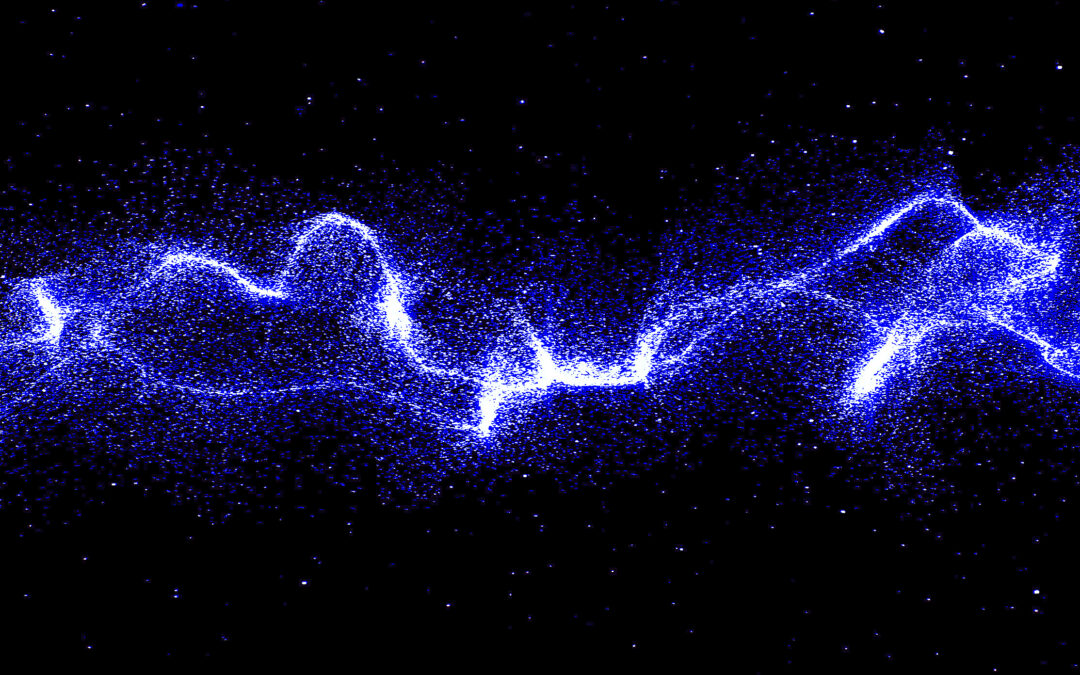I recently had the opportunity to review/test the Onics neutral-harmonic filter. The goal was to assess the technology’s impact on energy and reliability. Having investigated the old power-factor “energy savers” and related attempts in the 1990s, I was a bit skeptical about this opportunity. On one hand, I have used shunt filters in grounding systems to correct noise and improve machine reliability, and it’s well known that harmonics do have a parasitic energy aspect. On the other hand, I questioned just how much could be saved in neutral-harmonic losses. The results of my research were enlightening.
Before performing an energy study on a product, it’s important to review the theory and background. The process is normally referred to as “literature research.” In this case, that meant going through various peer-reviewed papers from the Institute of Electrical and Electronics Engineers (IEEE) and the Electric Power Research Institute (EPRI) to verify that the theory behind the Onics technology was sound. The best references were:
♦ Banerjee, “Power Quality Mitigation Technology Demonstration at Industrial Customer Sites: Industrial and Utility Harmonic Mitigation Guidelines and Case Studies,” Project 1000566, EPRI, Nov. 2000. See p. 2-17 ‘Neutral Current Filter,’ which is a series-capacitive filter versus a shunt.
♦ Sanguinetti and Y. Baghzouz, “Evaluation of Harmonic Current Reduction for the Purpose of Energy Savings – A Case Study,” Proceedings of the 14th International Conference on Harmonics and Quality of Power, Bergamo, Italy, Nov. 2010. Identified significant energy losses and impact due to 3rd harmonics in neutrals and energy systems.
♦ C. Neagu, G. Grigoraş and F. Scarlatache, “The influence of harmonics on power losses in urban distribution networks,” 2016 International Symposium on Fundamentals of Electrical Engineering (ISFEE), 2016, pp. 1-4, doi: 10.1109/ISFEE.2016.7803184. Identified significant losses in the system from single and three-phase harmonic loads that resulted in significant power losses. The focus was, again, on neutral currents.
♦ Kui, G. Shuhua, H. Qian, H. Yuanhong and W. Qinfang, “Investigation of harmonic distortion and losses in distribution systems with non-linear loads,” 2008 China International Conference on Electricity Distribution, 2008, pp. 1-6, doi: 10.1109/CICED.2008.5211816. Identified very large load losses within the neutral and reliability issues associated with reduced power factor and damage to sensitive electronics and other systems.
Overall, the literature research made clear that serious studies had been performed on the concepts surrounding harmonics and neutral currents, and that neutral filters had a place in the science. Most of the neutral filters identified were neutral-series capacitive types or focused on the reduction of the currents in each phase of the power supply.
I was provided with two Onics filters, each of which consisted of a box with two white leads and a ground (Fig. 1). My first step was to perform some bench testing on lighting panels at a local repair facility. In addition to lighting, these panels had non-linear loads, such as computers and phone systems. This testing found that the greater the current in the neutral, the greater the immediate reduction in losses. The loads were modest, but did identify the potential, as shown in Table I.

Fig. 1. Onics device (without markings) for evaluation.
 Table I. Watts Change For Non-linear Loads
Table I. Watts Change For Non-linear Loads
The results looked promising, so I then decided to test the technology in a commercial space that had electronic ballasts and a much higher neutral load than the repair facility.
COMMERCIAL-FACILITY TESTING AND OBSERVATIONS
The commercial site I chose was a 25,000-sq.ft. personal physical-training and event center with known loading. One panel served all lighting at the site. There were a few non-linear loads in other panels. The lighting system has a 460 Volt supply and serves 277 Volts to the lighting system with a neutral. A significant number of lights remain on 24/7. A full lighting load is about 10kW demand.
The facility includes a large 15,000-sq.-ft. main area; 5,000 sq. ft. of offices and change rooms; and 5,000 sq. ft. of studios at the back of the building. The center strip of lights in the main area, as well as lights in the bathrooms and back-room areas stay on 24 hours per day.
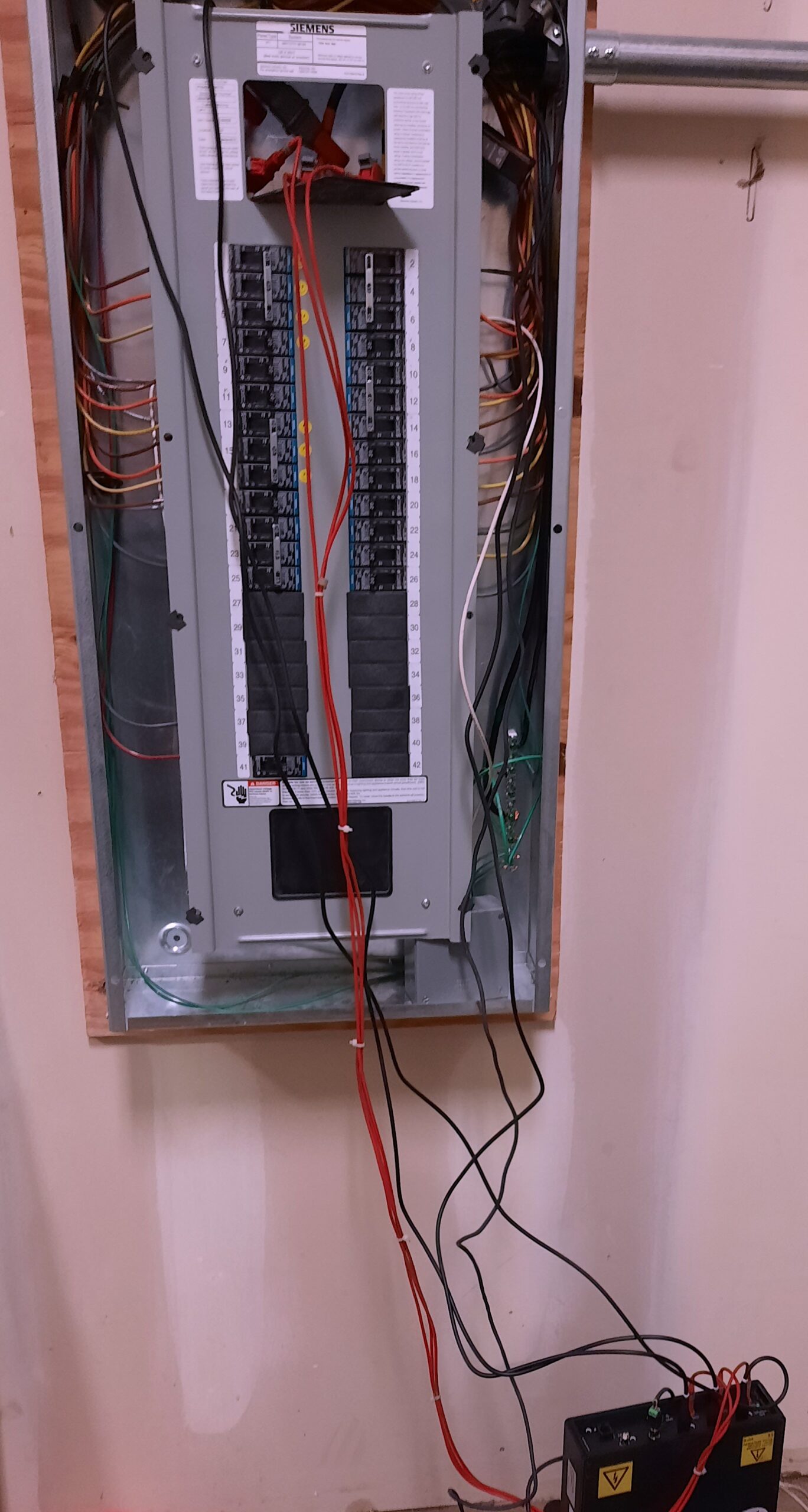
Fig. 2. The Onics filter was connected as instructed, with the white leads
at the extremes of the neutral, and the ground lead to earth ground.
For this facility study, an EMPATH Electrical Signature Analyzer was set up for three phases of voltage and three phases of current, with one additional current clamp to neutral. Measurements were taken with the system installed and disconnected in both evening mode (partial lighting) and daytime mode (full lighting). The daytime lighting mode was found to be 10.0 kW, with a real power factor of 0.667, while evening mode had a load of 4.8 kW and a real power factor of 0.662. The average full building demand is 28kW across each month providing an HVAC and auxiliaries average monthly loading of 18.0 kW. Averages were obtained across the fully open months in 2020 and the first quarter of 2021 (eight months total).
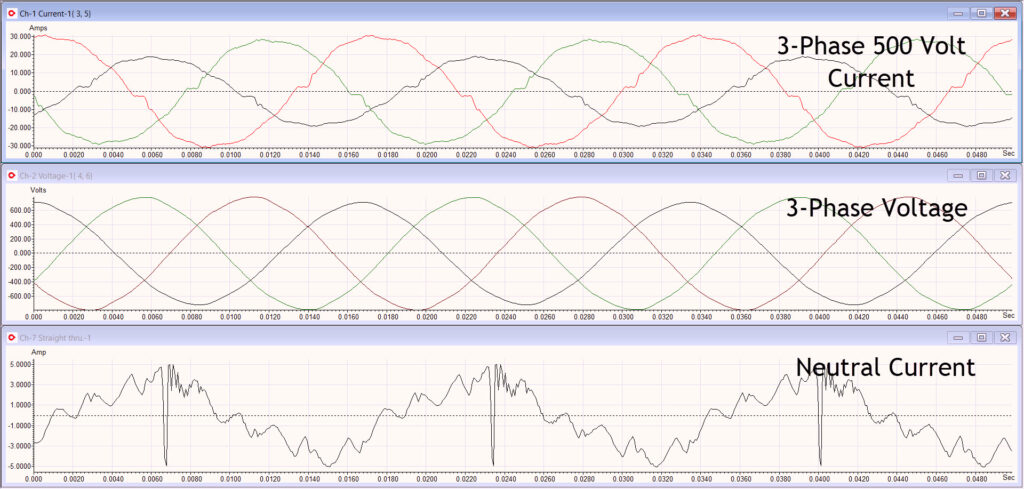
Fig. 3. Three phase current, voltage, and neutral current daytime loading.
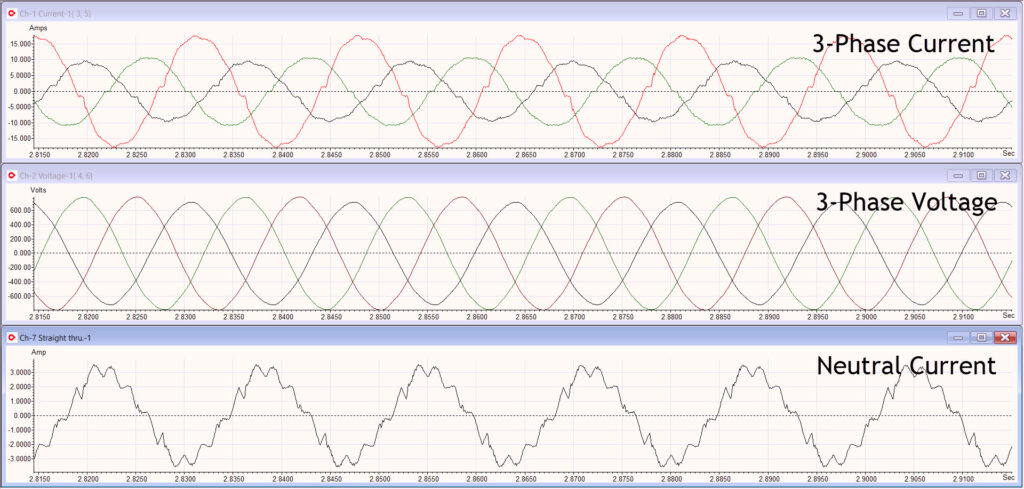
Fig. 4. Three phase current, voltage, and neutral current night-time loading.
In both Figs. 3 and 4, the Onics device had not yet been installed. Note the significant crossovers in the neutral current in Fig. 3. The device was then connected, as shown in Figs. 5 and 6, with a drop of 1.1 kW to 8.9 kW under daytime lighting and no measurable amount in night-time lighting. Potential energy savings of 3.1% can be considered good. The savings calculations were based upon historical data and the makeup of loads, heating and cooling days, and a few other items we use in energy analysis. It was also noted that the zero crossings were reduced significantly.
Information in the Onics literature referred to the need to allow the instrument to “soak.” There could be a few reasons for this, so we set up for a long-term review of energy data, expecting that we would see a small additional drop in consumption the following month. The study was set up for the day that the next billing cycle would start (the April bill).
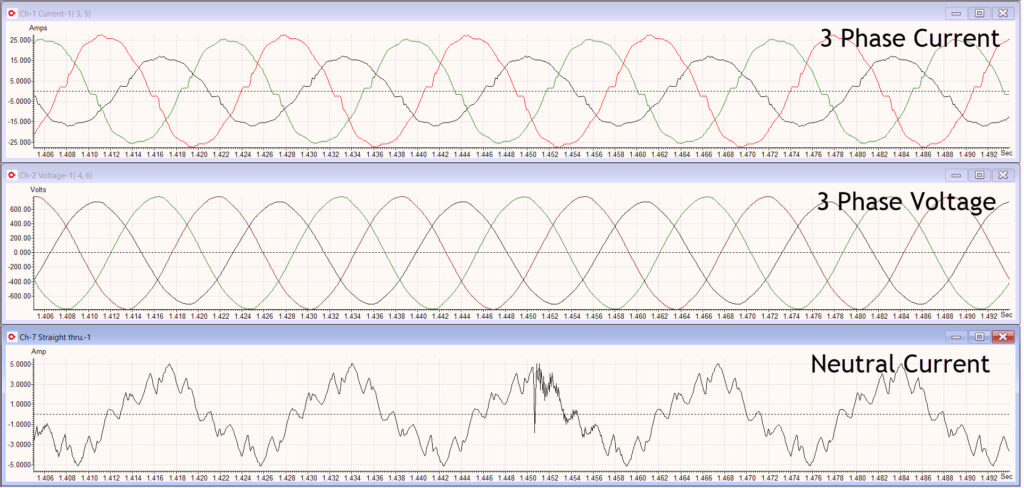
Fig. 5. Three phase current, voltage, and neutral current daytime loading after the Onics was installed.
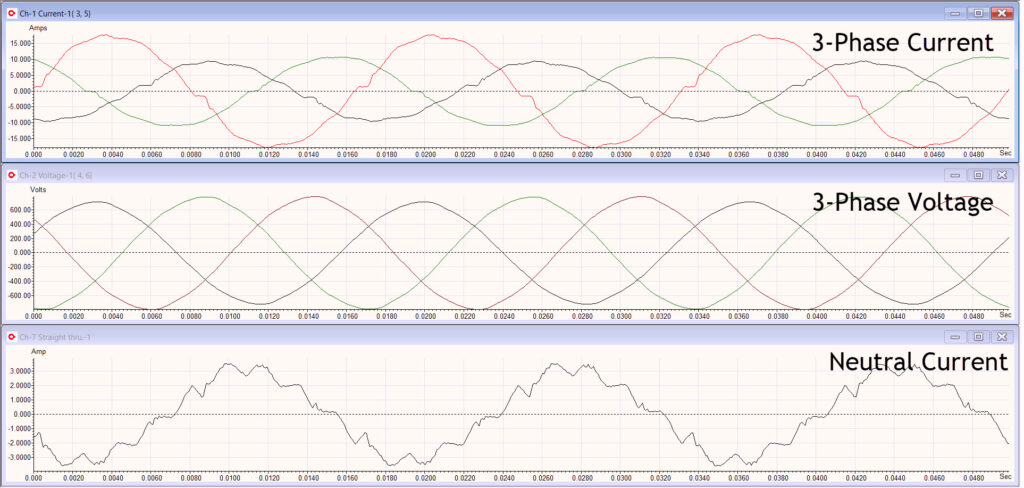
Fig. 6. Three phase current, voltage, and neutral current night-time loading after the Onics was installed.
Monitoring over the next two billing cycles was done using utility bills and comparisons to similar heating and cooling months. With the loosening of COVID-19 restrictions, more frequent and larger sporting events were taking place at the facility, and total lighting and HVAC operation were being monitored. (Note: The facility had been “shut down” in April and May 2020. During that period, work crews managed upgrades and other facility repairs and maintenance.) Equivalent months of operation were October and November 2020 (Fig. 7), with similar lighting days due to large events. Those large events also required the addition of 60 bulbs (36 watts each) in 15 fixtures for one of the studios, as well as an additional eight hours per day of event lighting.
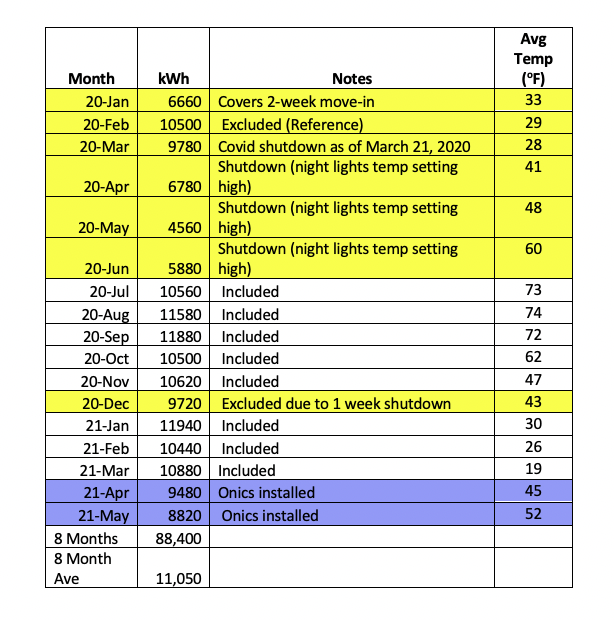 Table II. Energy Consumption At Facility, During 2020-2021
Table II. Energy Consumption At Facility, During 2020-2021
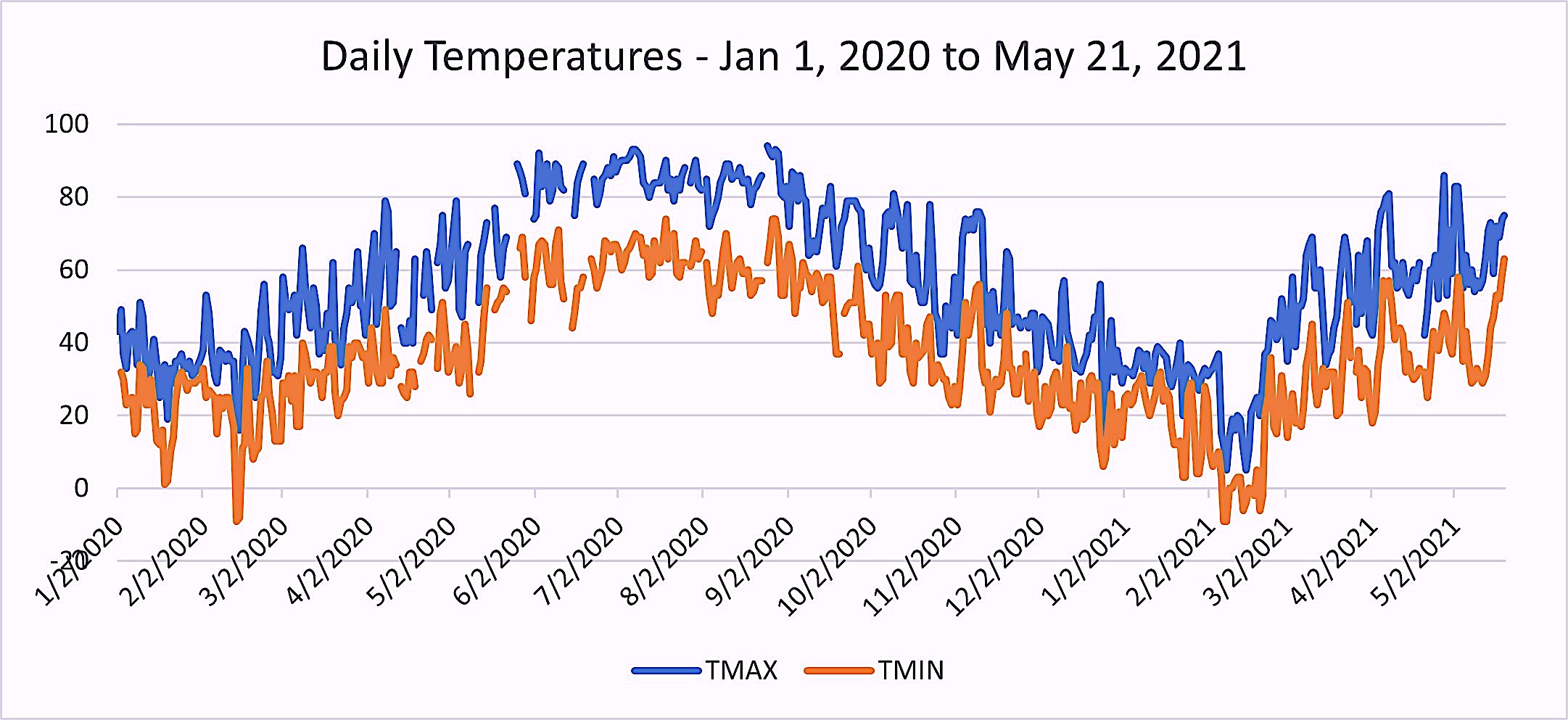
Fig. 7. Daily temperatures at commercial facility locale,
1/1/2020 – 5/21/2021 (Ref. NOAA).
The result with the monitored utility bills was an average of 9,150 kWh for the two months the Onics was connected to the facility’s lighting system. This represented an average reduction of 17% in total energy from attaching the Onics filter to the system (range 20% in May and 14% in April), with equivalent heating/cooling days. These results far exceeded the projected 3.1% savings based upon the snapshot data capture when installed.
RELIABILITY OBSERVATIONS
The second part of the study was observation of equipment and lighting failures. During the two months following the installation of the Onics at the physical training facility, no electronic failures or ballast failures occurred, and no bulb replacements required. There were also no observable changes to lighting or any additional noticeable flicker.
The EPRI report mentioned in the literature review identified potential concerns related to a series-neutral filter and increased harmonics in the power supply. In the case of the Onics technology, which is a shunt filter, no significant increases in harmonics were observed. However, a small increase in the power factor at the lighting panel (within the error tolerance of the instrument) was observed. Voltage harmonics were 1.586 THD and current harmonics were 5.426 THD, under full lighting conditions before installation of the Onics filter, and 1.552 THD voltage and 5.424 THD current after the installation. This was the opposite of the expected increase in THD that had been projected by EPRI in its December 2000 report.
As for actual Onics device, it stabilized at 2 C above ambient after several hours of observation. The unit also was relatively simple to install.
CONCLUSIONS
Normally a harmonics filter is positioned to reduce system impact on other components within the electrical system, such as transformers, connections, and conductors. While studies mentioned at the beginning of this article discuss the theoretical energy impact of neutral filtering in systems with significant 3rd harmonics in a lab environment, there were no independent practical-application studies performed. So far, in addition to the energy savings, the reliability aspects of the study appear to be performing as well as, or better than, prior to the study being performed.
Following better-than-projected results in reduction of energy consumption, with no other energy conservation measures taken, use of the Onics filter at the commercial physical-training facility will continue for a full calendar year. Additional measurements and research into the potential improvements in other parts of the system from reducing harmonic content in the neutral are also being investigated. The long-term reliability impact on electrical systems in the commercial facility are also continuing to be observed.
From an energy standpoint, the costs are $7.89/kW and $0.071/kWh, in association with the facility’s green-energy focus. The projected energy savings were, at first, expected to be relatively small, at ~$380/yr combined usage and demand. Now, though, the savings are projected (conservatively) to reach $2,106/year (a 17% reduction in a projected annual energy budget of $12,390). The application, though, was at the low end of the minimum 4Amps neutral current recommended for peak operation of the Onics product.
From the initial observations at the repair facility (with 1.5-2Amps neutral current) and the commercial facility (which had just under 4Amps at full daytime load), it was observed that the impact increased with the neutral load. With the reduction in neutral currents in the commercial facility, and the sizable decrease in energy consumption, further research into the impact on other branches of the system, in particular the three-phase HVAC system, is being conducted, The findings will be published in a separate review.TRR
ABOUT THE AUTHOR
Howard Penrose, Ph.D., CMRP, is Founder and President of Motor Doc LLC, Lombard, IL and, among other things, a Past Chair of the Society for Reliability and Maintenance Professionals, Atlanta (smrp.org). Email him at howard@motordoc.com, or info@motordoc.com, and/or visit motordoc.com.
Tags: reliability, availability, maintenance, RAM, electrical energy, energy efficiency, energy monitoring, harmonics, harmonic filter, IEEE, EPRI, Onics

